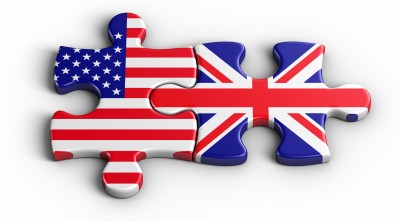The Anglo-American Axis Is Hellbent on Destabilizing Eurasia

All Global Research articles can be read in 51 languages by activating the “Translate Website” drop down menu on the top banner of our home page (Desktop version).
To receive Global Research’s Daily Newsletter (selected articles), click here.
Visit and follow us on Instagram at @globalresearch_crg.
***
The emerging Multipolar World Order is being threatened by the Anglo-American Axis (AAA) as evidenced by their simultaneous warmongering provocations against its joint Russian-Chinese engines. The US and UK united last September through AUKUS together with Australia to assemble an anti-Chinese coalition in the Indo-Pacific while they’re presently fueling the flames of tensions in Central & Eastern Europe (CEE) against Russia. These former hegemons won’t succeed in reversing the historically inevitable global systemic processes that Russia and China are jointly pioneering but they might nevertheless inflict massive destruction in pursuit of their ideologically driven divide-and-rule goals.
The grand strategic calculations that are influencing their permanent military, intelligence, and diplomatic bureaucracies’ (“deep state”) policy formulations are that they can succeed in simultaneously “containing” these Great Powers so long as they successfully assemble regional coalitions to that end. On the Western Eurasian front, the AAA is attempting to bring together the Baltic States, Poland, Romania, and Ukraine while the Eastern Eurasian one sees them trying to do the same with Australia, Japan, and perhaps a few ASEAN countries like the Philippines. India was designated a role in this anti-Chinese “containment” coalition but recently seems to have reconsidered its commitment.
India keenly understands that it cannot play a vanguard role in directly “containing” China, but what it can do is court more foreign investment in order to make its economy more competitive. New Delhi is also cooperating with its special and strategic partners in Moscow to jointly assemble a new Non-Aligned Movement (“Neo-NAM”) for the purpose of creating a third pole of influence in the bi-multipolar world order that’ll midwife the ultimate multipolar world. In Western Eurasia, it remains unclear to what extent aspiring CEE leader Poland is interested in going with playing a similar vanguard role vis-à-vis Russia judging by its reported interest in a military deal with Moscow.
These geostrategic uncertainties threaten to throw a wrench in the AAA’s simultaneous “containment” plans, which could make them desperate enough to provoke false-flag incidents against one or both of those Eurasian Great Powers for the purpose of catalyzing fast-moving sequences of events for galvanizing their desired regional alliances. This means that not just Russia and China, but also the countries in those two’s respective regions, must be on high alert for those extra-regional actors’ plots. The AAA believes that they’re geographically distanced enough from potential zones of hostilities to insulate themselves from the most immediate consequences that they might provoke.
In the face of these pressures, Russia and China will have to work more closely together, but Moscow must also avoid any disproportionate future dependence on Beijing, ergo its Neo-NAM plans with New Delhi. China also doesn’t want to put all of its eggs in the Russian basket either, which explains why it’s independently pioneered other transregional connectivity corridors that don’t transit through that country’s territory such as the Middle Corridor with Turkey via Central Asia & the South Caucasus as well as the China-Pakistan Economic Corridor (CPEC) and even the China-Myanmar Economic Corridor (CMEC). China’s geo-economic engagement with those countries preempts any dependence on Russia.
The AAA cannot realistically sustain equal “containment” efforts against Russia and China irrespective of the success of their regional coalition plans. This means that observers should expect one or the other to be prioritized, though the primary target might change with time and circumstances. The one that’s not being prioritized at any given moment will therefore come under comparatively less pressure and be able to operate in a more confident and strategically independent manner in their respective region. As the focus shifts from one to the other, the newly pressured target will rely on their counterpart to play a more important pressure valve role. In this sense, Russia and China will continue to need each other.
The ongoing New Cold War is primarily between the American and Chinese superpowers but is also increasingly resulting in their top British and Russian strategic partners respectively playing more prominent roles. India is expected to remain a global pivot state whose multi-alignment in one direction or another will greatly influence the dynamics of this global competition. Turkey and the GCC’s role (mostly the Emirati and Saudi ones in that context) will also an important part too, with Poland’s remaining influential as well but nowhere near the scale as those others’ since it’s expected to retain some degree of tension with Russia for the foreseeable future even if a military deal is agreed to.
Considering all of this, the AAA can be described as the principal antagonist in the New Cold War since it’s becoming impossible to discuss the American grand strategy in Eurasia without also talking about the supplementary role of its top British strategic partner. Relations between China and Russia are comparatively more equal but both are still trying to balance the other in friendly, gentle, and non-hostile ways via Beijing’s alternative transregional connectivity corridors and Moscow’s Neo-NAM with New Delhi. This increasingly complex version of multipolarity that’s evolving in the midst of the largely bi-multipolar world order is making International Relations more interesting than it’s been in decades.
*
Note to readers: Please click the share buttons above or below. Follow us on Instagram, @globalresearch_crg. Forward this article to your email lists. Crosspost on your blog site, internet forums. etc.
This article was originally published on OneWorld.

